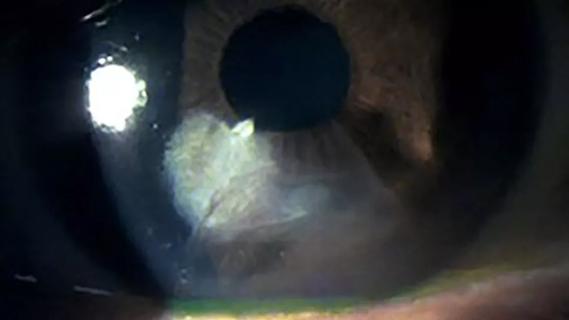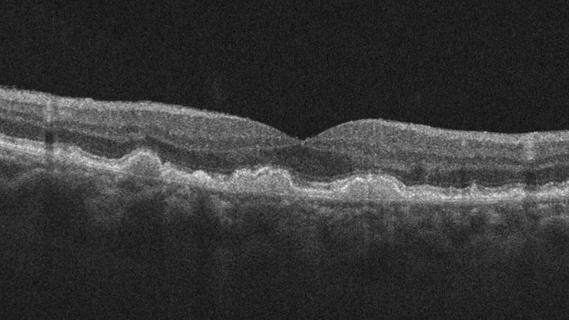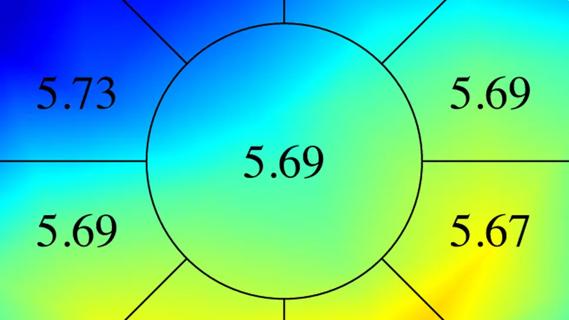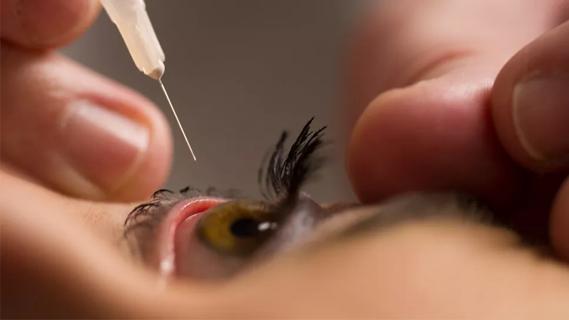Advertisement
IOP unresponsive to therapy prompts hunt for alternate diagnosis

By Annapurna Singh, MD, and Arun D. Singh, MD
Advertisement
Cleveland Clinic is a non-profit academic medical center. Advertising on our site helps support our mission. We do not endorse non-Cleveland Clinic products or services. Policy
In a recent issue of the Journal of Glaucoma, we reported a single case of apparent glaucoma and its unusual underlying diagnosis. Here is a synopsis of the case.
A 68-year-old male patient was referred to us for evaluation. After failed trabeculoplasty and laser peripheral iridotomy, this otherwise healthy patient was about to undergo a filtering procedure for his refractory, unilateral open-angle glaucoma. For the previous two years, he had experienced poorly controlled intraocular pressure in his right eye, consistently > 40 mm Hg despite maximal medical therapy, while his left eye usually measured 15 mm Hg.
The patient’s visual acuity was 20/50 in the right eye and 20/20 in the left, while the visual field in his right eye showed progressive loss. External examination revealed no proptosis and full ocular mobility. Slit-lamp examination of the right eye revealed prominent dilation of the episcleral veins in the right eye (not the left) and faintly demarcated, slightly raised, pink subconjunctival infiltrates restricted to the superior nasal quadrants with subtle interior perilimbal extension (below).

Fundus evaluation of the right eye showed a normal retina with no evidence of vitreous cells. However, his right eye showed a cup-to-disc ratio of 0.7 (0.25 in his left eye). We also observed confluent, yellow-colored choroidal infiltrate extending into the periphery as discrete lesions. In his left eye, we observed a normal optic nerve and similar yellow choroidal lesions (below).

We then conducted indocyanine angiography, which confirmed areas of infiltrative lesions in the choroid of both eyes. Ultrasonography also demonstrated the presence of bilateral choroidal lesions.
Advertisement
Our evaluation led us to a probable diagnosis: Ocular adnexal lymphoma with uveal lymphoma in both eyes but more severe in the right.
To confirm our suspicion, we utilized light microscopy, immunohistochemical staining and flow cytometry to evaluate a conjunctival biopsy. Morphologic and immunophenotypic findings pointed to a diagnosis of extranodal marginal zone lymphoma involving the ocular adnexal and uvea.
Our oncology and radiation oncology colleagues determined that his disease was localized to both orbits. Their recommendation was rituximab infusion of 750 mg weekly for four weeks. Due to limited response to the monoclonal antibody chemotherapy, they added radiation therapy of 2520 cGy in 14 fractions to both eyes.
The patient’s response to radiation therapy was excellent. Today, about five years later, he is in complete remission with normal IOP off medical therapy. His visual acuity is 20/40 in the right eye and 20/20 in his left, and the lymphoma has resolved.
In addition to the recalcitrant elevated intraocular pressure, the best clue to this diagnosis was unilateral conjunctival infiltration. It is likely that the conjunctival infiltration prevented adequate aqueous outlfow, resulting in IOP elevation in the more affected right eye.
While open-angle glaucoma – unilateral or bilateral – can be the result of primary intraocular lymphoma, lymphoma-associated central retinal vein occlusion, ciliary body invasion or masquerade uveitis, ocular adnexal lymphoma rarely causes increased pressure. This case serves as a good reminder to consider unconventional diagnoses when a presentation does not fit the typical clinical picture.
Annapurna Singh, MD, is a staff ophthalmologist, and Arun D. Singh, MD, is Director, Department of Ophthalmic Oncology, Cole Eye Institute.
Read more about glaucoma on Consult QD.
Join us for the Cole Eye Institute Distinguished Lecture Series
Advertisement
Advertisement

Skin conditions could indicate risk of complication after surgery for retinal detachment

New study counters earlier findings linking drugs with eye disease

Review shows that the disease isn’t only in young women with obesity

Only 33% of patients have long-term improvement after treatment

Studies continue to indicate effectiveness and safety

Early data show risk is 73% higher in patients with lupus, 40% higher in patients with rheumatoid arthritis

Identifies weak spots in the cornea before shape change occurs

Study highlights the value of quantitative ultra-widefield angiography